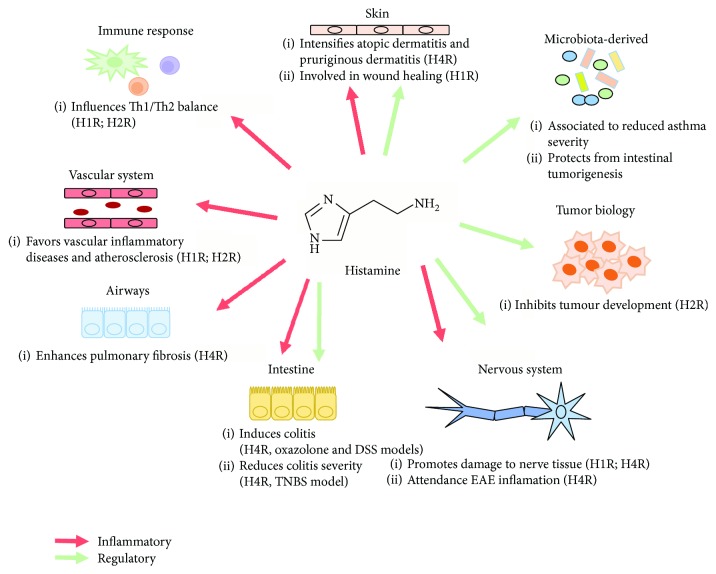Figure 2.
Inflammatory and regulatory functions of histamine on different body sites. Histamine plays dual functions according to the cell type and the receptor. As an inducer of inflammation, histamine can contribute to pulmonary fibrosis, cardiovascular diseases and atherosclerosis, atopic dermatitis, central nervous system damage, and colitis in some experimental models, besides favoring the polarization of the immune response to a Th1 profile. On the other hand, histamine can regulate inflammation in models of experimental autoimmune encephalomyelitis (EAE) and colitis, favor wound healing in skin lesions, and inhibit tumour development. Also, microbiota-derived histamine can regulate the inflammatory picture of asthma. Red arrows indicate proinflammatory action; green arrows indicate regulatory action of histamine.

